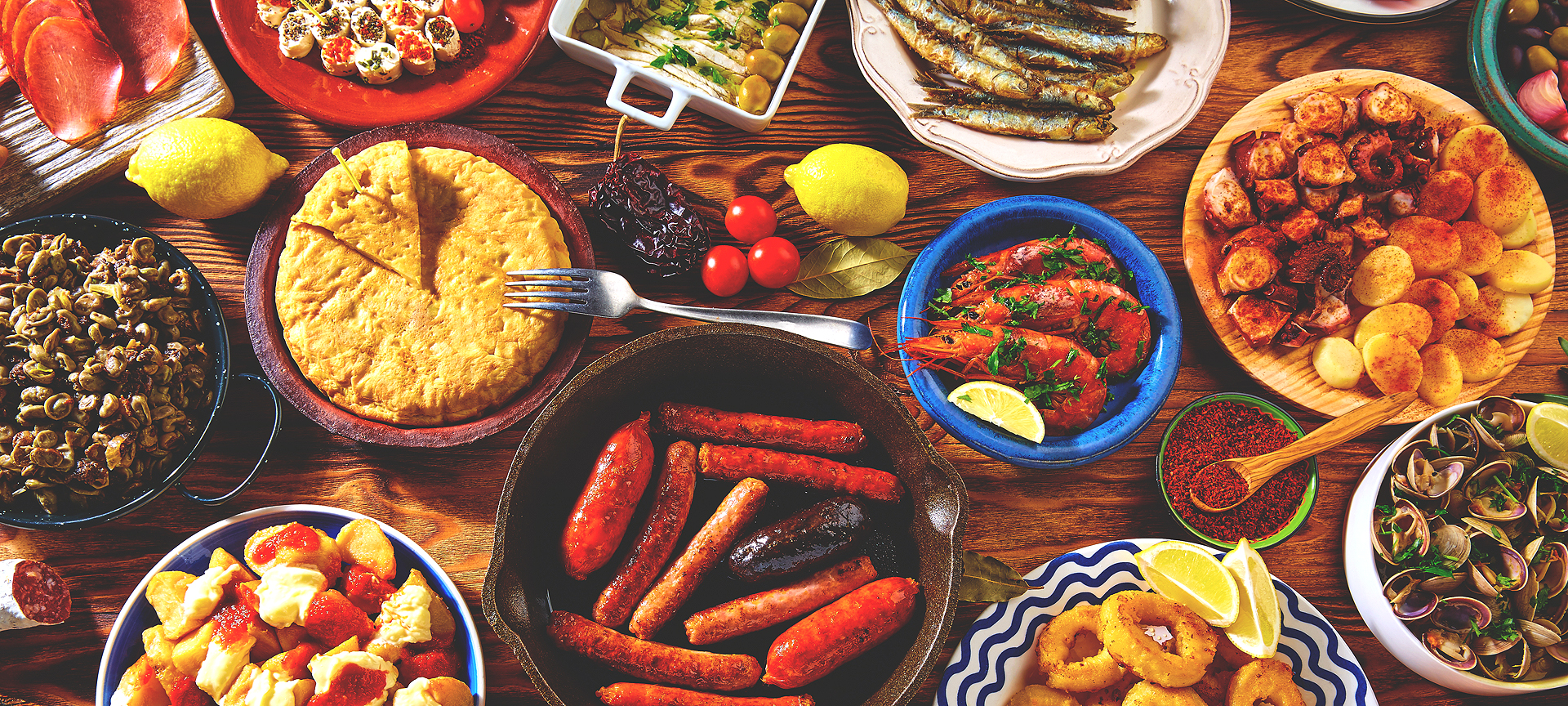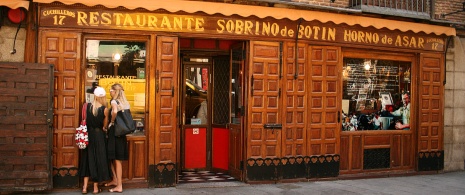
Some curious facts about Spanish cuisine
How did traditional Spanish tapas get their name? Have you ever wondered where it came from? It’s time to uncover a series of curious facts about Spanish cuisine that might just satisfy the appetites of those with a hunger for knowledge. And no wonder, because Spanish cooking never fails to surprise, every single day.
Debe activar Javascript para poder utilizar este servicio
-

The world’s oldest restaurant can be found in Spain
With almost three hundred years of history behind it, the Sobrino de Botín restaurant is still going strong in Calle Cuchilleros, Madrid. It was opened in the year 1725 by a French cook, Jean Botín, and his Asturian wife. At first it was a small tavern called the Hostería Botín that also offered guests accommodation for the night. Today, its antique oven is still in operation and, what’s more, the restaurant’s assistant manager assures us that it hasn’t gone out once in 297 years. This is a restaurant where recipes are handed down from generation to generation, ensuring that it never loses one of its greatest attractions: a love of tradition.
-

The origin of the word ‘tapa’
Tapas are a marker of Spain’s identity, and the word expresses one of the country’s traditional ways of eating. They’re small snacks served alongside drinks as a sort of aperitif. In Spain, the act of heading out to a bar with friends to enjoy some tapas even has its very own name: “tapeo”. But where does the name come from? There are many stories regarding the origin of the word, but one of the best known suggests that it comes from the habit of serving drinks with some kind of lid (or ‘tapa’), for example a slice of ham or cheese, so as to prevent insects or dust getting into the glass. From then on, the custom evolved until it became what it is today: a deep-rooted practice in the country’s culinary culture which is now celebrated every third Thursday in June: World Tapas Day.
-

Spain is close to the top of the list of countries with the most bars in the world
Spain is one of the countries with the most bars per person on the planet. In 2020, figures from National Institute of Statistics (INE) indicated that there was a restaurant for every 175 inhabitants.And that’s because a bar is a meeting place for leisure and a part of Spanish culture. Something so closely linked to the country’s history and folklore that, in the same year, the Together for Hospitality platform launched an initiative requesting that Spanish bars be recognised as World Heritage Sites.
-

Spain is the world’s leading producer of olive oil
Virgin olive oil is one of the fundamental ingredients in the Mediterranean diet. That’s because its nutritional value has made it a vital element of many of its dishes. The biggest olive-oil producers can be found in the Mediterranean area: Spain comes first, followed by Italy and Greece. Today, Spain is the country with the most olive groves on the planet - most of them concentrated in the south: in Andalusia. Can you guess which Andalusian province has the greatest number of olive trees? It’s Jaén! Its endless landscape of olive groves is known as the “Sea of Olives”. In fact, the Historical-Heritage Council (CPH) wants this “Sea of Olives” to be put forward as a candidate for UNESCO World Heritage status. On top of all this, Spain is also one of the countries with the most extensive grape-growing areas on the planet. And, what’s more, almost all of the world’s saffron production takes place in Spain. And a good paella just isn’t the same without its saffron!









